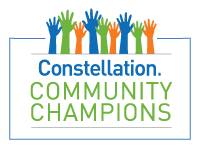A Laurel School House Sampler
Exhibit Dates: March 2001-December 2001
Beginning March 4, 2001 visitors to the Laurel Museum took a step back in time to experience formal education as students from the turn of the century knew it. Within the Museum a space evoking a schoolroom from Laurel Elementary School #3 was recreated. The school room is part of A Laurel School House Sampler, an exhibition examining the history of education and the methods of learning and primary education curriculum of the 19th - early 20th century in Laurel.
In addition to the school room, eight original samplers - needlepoint works which girls made to learn their ABC's - were on display. The oldest sampler dates to 1804. Needlework in the form of a "courting towel" was created by Margaret Sadler McCeney. She embroidered each of her beaus' signatures onto a towel.
Augmenting a display of early exercise books and photographs, the exhibition also included materials from the Rockland School for Girls, a school attended by the daughters of prosperous Laurel residents. There was also a recreation of a late 19th C parlor, complete with pump organ.
"For women during the 19th Century, the educational emphasis was often on domestic arts. Samplers such as these played a dual role. Not only did they teach a woman her letters, but they enhanced her sewing skills," stated Museum Director Alexandra Roosa, who curated the exhibition.
Laurel in many ways was at the forefront of the movement to extend education beyond the very wealthy in Prince George's County. The earliest known school in the community, established by Horace Capron and the owners of the Patuxent Manufacturing Company in the 1840's, provided free education to the children of mill workers. Private academies attended by prosperous families and girls finishing schools also thrived. The state established free public education after the Civil War, and records show that in 1868 Prince George's County's largest public school was in Laurel. By the late 19th Century, Laurel, with strong community support that overcame county resistance, became the site of the county's first public high school, the only one in Prince George's County before the turn of the century.
The exhibition also addressed the issue of African-American education in the community, with special emphasis on Laurel Elementary #2, the community's public school for African American students during segregation.
Beginning March 4, 2001 visitors to the Laurel Museum took a step back in time to experience formal education as students from the turn of the century knew it. Within the Museum a space evoking a schoolroom from Laurel Elementary School #3 was recreated. The school room is part of A Laurel School House Sampler, an exhibition examining the history of education and the methods of learning and primary education curriculum of the 19th - early 20th century in Laurel.
In addition to the school room, eight original samplers - needlepoint works which girls made to learn their ABC's - were on display. The oldest sampler dates to 1804. Needlework in the form of a "courting towel" was created by Margaret Sadler McCeney. She embroidered each of her beaus' signatures onto a towel.
Augmenting a display of early exercise books and photographs, the exhibition also included materials from the Rockland School for Girls, a school attended by the daughters of prosperous Laurel residents. There was also a recreation of a late 19th C parlor, complete with pump organ.
"For women during the 19th Century, the educational emphasis was often on domestic arts. Samplers such as these played a dual role. Not only did they teach a woman her letters, but they enhanced her sewing skills," stated Museum Director Alexandra Roosa, who curated the exhibition.
Laurel in many ways was at the forefront of the movement to extend education beyond the very wealthy in Prince George's County. The earliest known school in the community, established by Horace Capron and the owners of the Patuxent Manufacturing Company in the 1840's, provided free education to the children of mill workers. Private academies attended by prosperous families and girls finishing schools also thrived. The state established free public education after the Civil War, and records show that in 1868 Prince George's County's largest public school was in Laurel. By the late 19th Century, Laurel, with strong community support that overcame county resistance, became the site of the county's first public high school, the only one in Prince George's County before the turn of the century.
The exhibition also addressed the issue of African-American education in the community, with special emphasis on Laurel Elementary #2, the community's public school for African American students during segregation.

